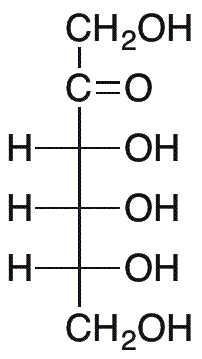D-Psicose is widely utilized in research focused on various applications across different industries:
- Food Industry: As a low-calorie sweetener, D-Psicose is used in food products to provide sweetness without the calories associated with sugar, making it an attractive option for sugar substitutes in health-conscious products.
- Pharmaceuticals: It serves as a potential therapeutic agent in managing diabetes by regulating blood sugar levels, offering a natural alternative to synthetic drugs.
- Cosmetics: D-Psicose is incorporated into skincare products for its moisturizing properties, helping to enhance skin hydration and improve overall skin texture.
- Biotechnology: In research settings, it is used as a carbon source in microbial fermentation processes, aiding in the production of biofuels and biochemicals.
- Nutrition: D-Psicose is studied for its prebiotic effects, promoting gut health by supporting beneficial bacteria in the digestive system.
General Information
Properties
Safety and Regulations
Applications
D-Psicose is widely utilized in research focused on various applications across different industries:
- Food Industry: As a low-calorie sweetener, D-Psicose is used in food products to provide sweetness without the calories associated with sugar, making it an attractive option for sugar substitutes in health-conscious products.
- Pharmaceuticals: It serves as a potential therapeutic agent in managing diabetes by regulating blood sugar levels, offering a natural alternative to synthetic drugs.
- Cosmetics: D-Psicose is incorporated into skincare products for its moisturizing properties, helping to enhance skin hydration and improve overall skin texture.
- Biotechnology: In research settings, it is used as a carbon source in microbial fermentation processes, aiding in the production of biofuels and biochemicals.
- Nutrition: D-Psicose is studied for its prebiotic effects, promoting gut health by supporting beneficial bacteria in the digestive system.
Documents
Safety Data Sheets (SDS)
The SDS provides comprehensive safety information on handling, storage, and disposal of the product.
Product Specification (PS)
The PS provides a comprehensive breakdown of the product’s properties, including chemical composition, physical state, purity, and storage requirements. It also details acceptable quality ranges and the product's intended applications.
Certificates of Analysis (COA)
Search for Certificates of Analysis (COA) by entering the products Lot Number. Lot and Batch Numbers can be found on a product’s label following the words ‘Lot’ or ‘Batch’.
*Catalog Number
*Lot Number
Certificates Of Origin (COO)
This COO confirms the country where the product was manufactured, and also details the materials and components used in it and whether it is derived from natural, synthetic, or other specific sources. This certificate may be required for customs, trade, and regulatory compliance.
*Catalog Number
*Lot Number
Safety Data Sheets (SDS)
The SDS provides comprehensive safety information on handling, storage, and disposal of the product.
DownloadProduct Specification (PS)
The PS provides a comprehensive breakdown of the product’s properties, including chemical composition, physical state, purity, and storage requirements. It also details acceptable quality ranges and the product's intended applications.
DownloadCertificates of Analysis (COA)
Search for Certificates of Analysis (COA) by entering the products Lot Number. Lot and Batch Numbers can be found on a product’s label following the words ‘Lot’ or ‘Batch’.
*Catalog Number
*Lot Number
Certificates Of Origin (COO)
This COO confirms the country where the product was manufactured, and also details the materials and components used in it and whether it is derived from natural, synthetic, or other specific sources. This certificate may be required for customs, trade, and regulatory compliance.


